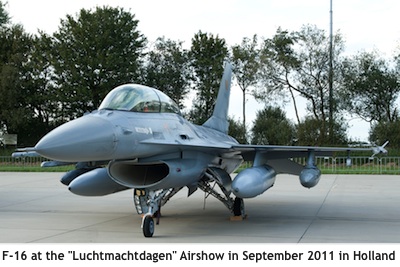WASHINGTON – The US Air Force has test flown an F-16 fighter jet without a pilot on board for the first time, in the latest sign of the military’s increasing reliance on drones.
The robotic F-16 flew for 55 minutes with an empty cockpit from a base in Florida last week, as part of a program that will see the converted fighter jet used as a target for pilots in training, manufacturer Boeing said.
“It was really amazing to see an F-16 take off with nobody in it,” said Michelle Shelhamer from Boeing, which has adapted the plane for the US military.
The aircraft is one of six “retired” F-16 jets that will be used as aerial targets for fighter pilots training for air-to-air combat, she said.
 “They’re basically built to be shot down,” she told AFP. “It’s full-scale, real world, real life, combat training — not with a simulator or anything else.”
“They’re basically built to be shot down,” she told AFP. “It’s full-scale, real world, real life, combat training — not with a simulator or anything else.”
During the flight out of Tyndall Air Force base in Florida, the QF-16 reached an altitude of 40,000 feet (nearly 12,200 meters) and flew at supersonic speeds over Mach one, according to Shelhamer.
There was no pilot on board to experience gravitational forces as the plane performed maneuvers, including a barrel roll.
Related: The Veterans of the Future will be Those in Computer-Based Combat
The plane was operated by two test pilots from a ground control station and the flight went off without a hitch, officials said.
It was not the first time the Air Force has adapted old fighters as drones for use in air-to-air combat training. Since 1997, the Pentagon used more than 80 F-4 Phantoms converted into robotic planes for targets.
But the F-16s offered a faster, “more realistic” training target than the slower F-4s, said Tyndall spokesman Herman Bell.
The Air Force, however, said the F-16 drones would only be used for target practice and not added to the growing fleet of unmanned aircraft.
“I can tell you that there are no plans to use these aircraft as a combat asset,” said spokesman Master Sergeant Randy Redman.
“This is just the next step in the evolution of the training program to ensure that our pilots remain the best in the world.”
A leading expert on robotic technology in warfare, Peter Singer, said the conversion of the F-16s did not represent a breakthrough, as F-4s had been adapted in a similar way more than a decade ago.
“It’s not fundamentally different than converting past generations of fighters,” said Singer, author of “Wired for War.”
But the test flight offered a reminder of how robotic technology is spreading rapidly through the US military and other countries’ armed forces, he said.
The pilotless F-16 took to the air amid an internal debate inside the Air Force over the future role of drones, with some commanders skeptical of the potential utility of the unmanned planes against adversaries with strong air defenses.
Armed drones have become America’s weapon of choice in hunting down Al-Qaeda militants after a whole range of unmanned planes and ground robots became common in the wars in Iraq and Afghanistan for surveillance and defusing homemade bombs.
Skeptics who have claimed drones would never fly at high speed or be able to land on an aircraft carrier have been proven wrong, according to Singer, a fellow at the Brookings Institution think tank.
“The introduction of unmanned systems is as a big game changer as things like the introduction of the tank, the computer or the aircraft carrier,” he said.
Related: Pentagon Calls Off New Medal for Drone, Cyber Warriors
Related: The Veterans of the Future will be Those in Computer-Based Combat













